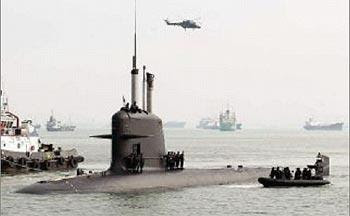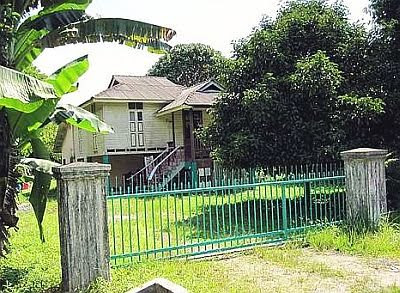Arms Races in Southeast Asia?
Updated 25012015 2151hrs: Informed sources said on 7 January 2015, Indonesia's Ministry of Defence and the United States Defence Official had inked a defence agreement allowing the latter to assist Indonesia's defence forces in formulating new military strategies to enhance its military performance in Southeast Asia. The agreement will be in-force immediately until 2019. Informed source also disclosed that Indonesia plans to pursue substantial institutional reforms through "Defence Institution Reform Initiative".
Analysis
2. Southeast Asia has become so important for geopolitical interest among the world powers, especially after the United States had revealed its Asia Pacific new pivotal policy. Well understood, the US had changed its policy focusing on Asia and Pacific to balance China's growing influence in this region.
3. China had openly claimed almost the entire South China sea as theirs through the nine dotted line. The scenario had developed into a territorial crisis with the occupation of islands within the Philippines EEZ and show of force in Vietnam's water as well as in Malaysian territory. Sooner or later, China will claim Indonesia's Natuna island. Beijing's aggressive maritime policy had created the emergency alarm among the Southeast Asia countries. All these unhealthy developments had antagonised the security scenario in the South China Sea, Southeast Asia region.
4. While China has developed its maritime power as well as emerging new economy powerhouse, Southeast Asia countries are lacking fire-power capabilities and economically leaning on external capitalist. China was one of them. In-fact Beijing has deliberately mobilised its capital in all Southeast Asia countries with future geopolitical interest.
5. Southeast Asia countries had benefited through the rivalry of the US and China, however, for longer run their geopolitical interest had made this region as a race-coast not only for capital investment but beyond that as a strong potential market for arms procurement.
6. China has intensified its capital investment in Southeast region while the US are investing in military aid. In this context, almost the entire Southeast Asia region are focusing on the US military assistance to balance China's maritime power, even though they have accepted economy benefits from Beijing.
7. I'm of the opinion, in the longer run, these development is not healthy for Southeast Asia countries. For various reasons, Southeast Asia countries are still lacking the trust and unity among themselves and with the excessive military development it may enhance the distrust among its neighbours. Furthermore, the future co-operations among its neighbours may be stalled due to the lack of trust, an immediate outcome from the military development.
8. Scepticism among its neighbours may push one to modernise its military capability and indirectly the whole region will fall into the arms race. While I agree that each country needs the "minimum credible defence" capability but the understanding of "minimum..." is very subjective. One country may assume that 10 fighter jet is more than enough but other country may have different opinion on the quantity. To compete each others, the "minimum" may turn up as unlimited.
#end
Analysis
2. Southeast Asia has become so important for geopolitical interest among the world powers, especially after the United States had revealed its Asia Pacific new pivotal policy. Well understood, the US had changed its policy focusing on Asia and Pacific to balance China's growing influence in this region.
3. China had openly claimed almost the entire South China sea as theirs through the nine dotted line. The scenario had developed into a territorial crisis with the occupation of islands within the Philippines EEZ and show of force in Vietnam's water as well as in Malaysian territory. Sooner or later, China will claim Indonesia's Natuna island. Beijing's aggressive maritime policy had created the emergency alarm among the Southeast Asia countries. All these unhealthy developments had antagonised the security scenario in the South China Sea, Southeast Asia region.
4. While China has developed its maritime power as well as emerging new economy powerhouse, Southeast Asia countries are lacking fire-power capabilities and economically leaning on external capitalist. China was one of them. In-fact Beijing has deliberately mobilised its capital in all Southeast Asia countries with future geopolitical interest.
5. Southeast Asia countries had benefited through the rivalry of the US and China, however, for longer run their geopolitical interest had made this region as a race-coast not only for capital investment but beyond that as a strong potential market for arms procurement.
6. China has intensified its capital investment in Southeast region while the US are investing in military aid. In this context, almost the entire Southeast Asia region are focusing on the US military assistance to balance China's maritime power, even though they have accepted economy benefits from Beijing.
7. I'm of the opinion, in the longer run, these development is not healthy for Southeast Asia countries. For various reasons, Southeast Asia countries are still lacking the trust and unity among themselves and with the excessive military development it may enhance the distrust among its neighbours. Furthermore, the future co-operations among its neighbours may be stalled due to the lack of trust, an immediate outcome from the military development.
8. Scepticism among its neighbours may push one to modernise its military capability and indirectly the whole region will fall into the arms race. While I agree that each country needs the "minimum credible defence" capability but the understanding of "minimum..." is very subjective. One country may assume that 10 fighter jet is more than enough but other country may have different opinion on the quantity. To compete each others, the "minimum" may turn up as unlimited.
#end


Comments